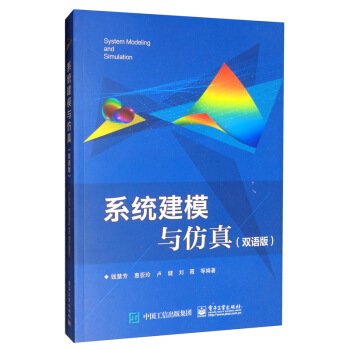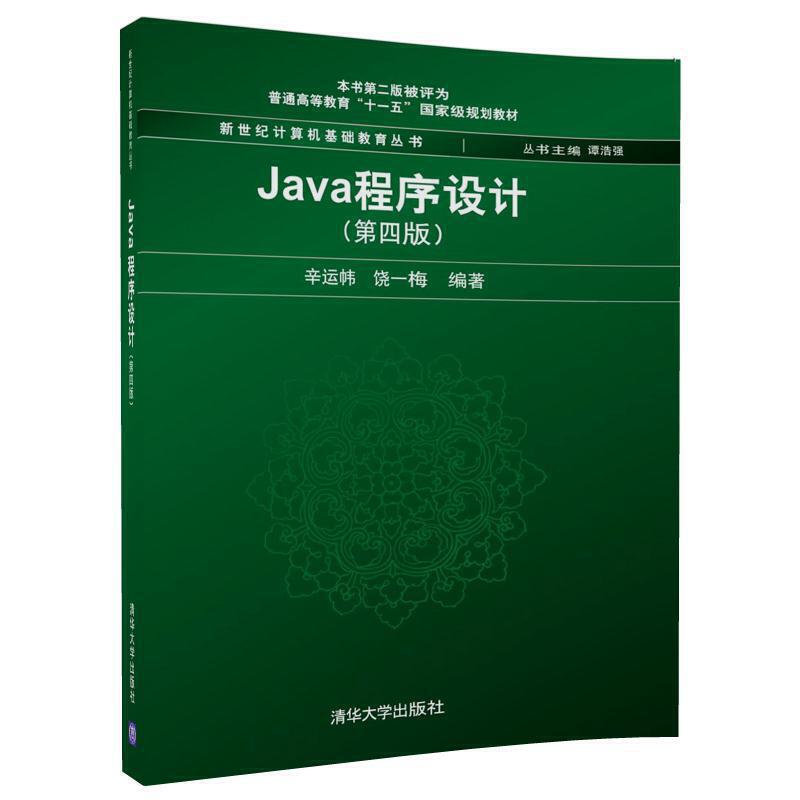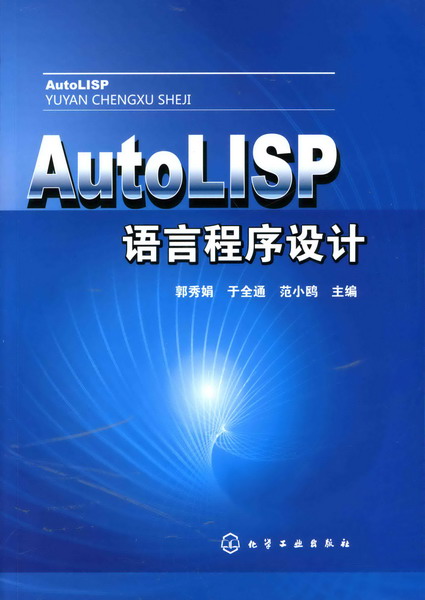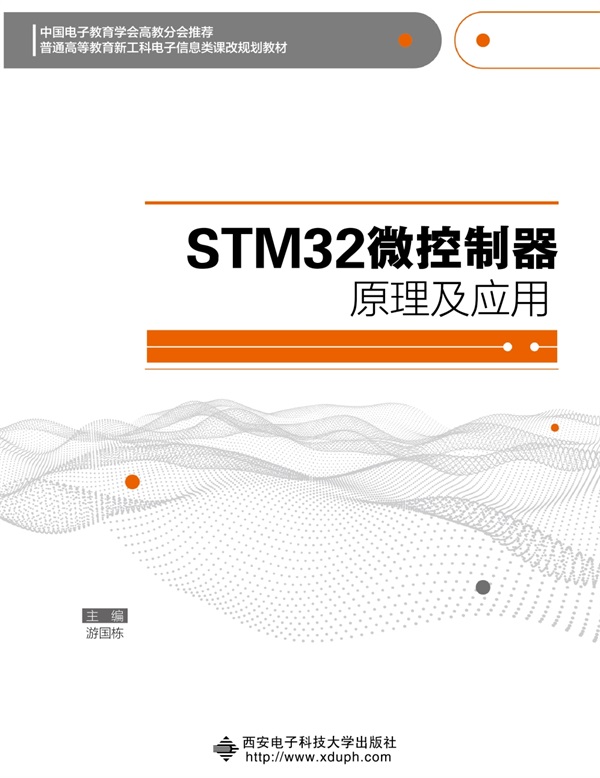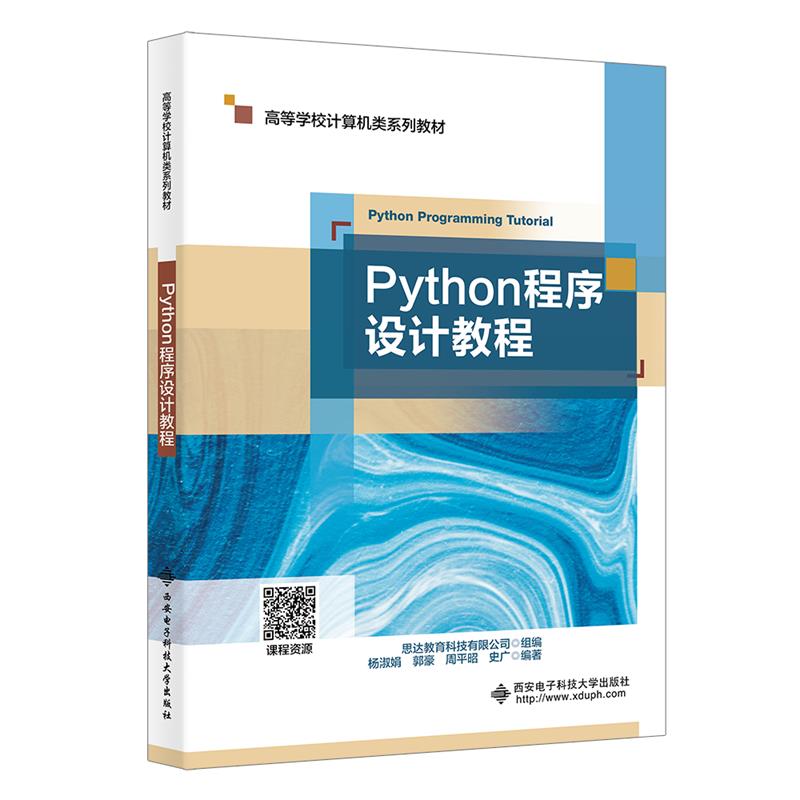- 电子工业出版社
- 9787121352614
- 1-1
- 295400
- 16开
- 2019-11
- 354
- 电子信息工程(工学/理学)
- 本科 研究生(硕士、EMBA、MBA、MPA、博士)
作者简介
内容简介
《系统建模与仿真(双语版)》是中英文对照编写,可以作为自动化和控制类专业及相近专业的仿真课程双语教学用书。
《系统建模与仿真(双语版)》共4个主要模块。一模块包括第1章和第2章,主要内容是MATLAB基础内容及其编程基本知识;二模块包括第3章、第4章和第5章,主要内容是建立数学模型(基本传递函数模型建立和状态空间模型建立);三模块包括第6章、第7章和第8章,是系统稳定性分析和系统设计;四模块包括第9章和第10章,是Simulink建模。
除了中英文双语对照,《系统建模与仿真(双语版)》另一大特色是实例丰富。每一章的知识点都以具体实例进行介绍,生动、灵活地呈现了运用MATLAB的具体操作步骤及其仿真过程。
《系统建模与仿真(双语版)》结构清晰,突出实用性,以丰富的实例突出实践性。
《系统建模与仿真(双语版)》既可以作为自动控制等相关专业的教学参考书,也作为MATLAB语言入门参考书,亦可以作为专业英语教材。书中的实例为相关课程设计、毕业设计等提供了重要参考。
目录
第1章 MATLAB基础知识 1
1.1 MATLAB入门 2
1.1.1 输入矩阵 2
1.1.2 求和、转置和对角线 3
1.1.3 下标 4
1.1.4 冒号运算符 4
1.1.5 魔方阵函数 5
1.2 表达式 5
1.2.1 变量 5
1.2.2 数字 5
1.2.3 运算符 5
1.2.4 函数 6
1.3 矩阵操作 7
1.3.1 生成矩阵 7
1.3.2 M文件 7
1.3.3 连接 7
1.3.4 删除行和列 8
1.4 命令窗口与常用函数 8
1.4.1 格式命令与长命令行 8
1.4.2 隐藏输出 9
1.4.3 命令行编辑 9
1.4.4 常用基本函数 10
1.4.5 常用进阶函数 11
1.5 绘图 13
1.5.1 创建一个图 13
1.5.2 图形窗口 14
1.5.3 添加图形至现有的图 15
1.5.4 绘制子图 15
1.5.5 隐函数绘图 16
1.5.6 轴的控制 16
1.5.7 轴标记和标题 17
1.5.8 plot3和mesh 18
1.5.9 图像 19
本章小结 20
Chapter 1 Basics of MATLAB 21
1.1 Introduction to MATLAB 22
1.1.1 Entering Matrices 22
1.1.2 Sum, Transpose, and Diagonal 23
1.1.3 Subscripts 24
1.1.4 The Colon Operator 24
1.1.5 The Magic Function 25
1.2 Expressions 25
1.2.1 Variables 25
1.2.2 Numbers 26
1.2.3 Operators 26
1.2.4 Functions 26
1.3 Operation with Matrices 27
1.3.1 Generating Matrices 27
1.3.2 M-Files 27
1.3.3 Concatenation 28
1.3.4 Deleting Rows and Columns 28
1.4 The Command Window and Commonly Used Functions 29
1.4.1 The Format Command and Long Command Lines 29
1.4.2 Suppressing Output 30
1.4.3 Command Line Editing 30
1.4.4 Commonly Used Basic Functions 30
1.4.5 Commonly Used Advanced Functions 32
1.5 Graphics 34
1.5.1 Creating a Plot 34
1.5.2 Figure Windows 36
1.5.3 Adding Plots to an Existing Graph 36
1.5.4 Subplots 36
1.5.5 Ezplot 37
1.5.6 Axes Control 38
1.5.7 Axis Labels and Titles 38
1.5.8 plot3 and mesh 39
1.5.9 Images 40
Summary 41
生词注解 41
第2章 MATLAB编程 43
2.1 流控制 44
2.1.1 if语句 44
2.1.2 for和while语句 44
2.1.3 break语句 45
2.1.4 switch和case 46
2.2 脚本 46
2.3 函数 47
2.4 编程实例 51
本章小结 55
Chapter 2 MATLAB Programming 56
2.1 Flow Control 57
2.1.1 if Statements 57
2.1.2 for and while Statement 57
2.1.3 break Statements 58
2.1.4 switch and case 59
2.2 Scripts 59
2.3 Functions 61
2.4 Examples 65
Summary 68
生词注解 68
第3章 控制系统的传递函数模型 69
3.1 线性定常系统简介 70
3.2 线性定常系统的传递函数 70
3.2.1 简介 70
3.2.2 定义 70
3.2.3 相关说明 71
3.3 基于MATLAB的传递函数描述 72
3.3.1 传递函数的降幂排列标准形式 72
3.3.2 传递函数的零极点模型 74
3.3.3 传递函数的部分分式展开 79
3.4 结构图的连接与化简 80
3.4.1 相关函数 81
3.4.2 连接与化简实例 81
3.5 建模与仿真实例 83
3.5.1 RLC电路的传递函数建模 84
3.5.2 RLC电路的仿真分析 84
3.5.3 机械位移系统的传递函数建模 85
3.5.4 机械位移系统的仿真分析 86
本章小结 87
Chapter 3 Transfer Function Model of Control System 88
3.1 Introduction to Linear Time-Invariant Systems 89
3.2 Transfer Function of Linear Time-Invariant Systems 89
3.2.1 Introduction 89
3.2.2 Definition 90
3.2.3 Related Instructions 90
3.3 Transfer Function Description in MATLAB 91
3.3.1 Standard Form in Descending Power of Transfer Functions 92
3.3.2 The Zero-Pole Model of Transfer Function 94
3.3.3 Partial-Fraction Expansion of Transfer Function 99
3.4 Connection and Simplification of Structure Diagram 101
3.4.1 Related Functions 101
3.4.2 Examples of Connection and Simplification 102
3.5 Modeling and Simulation Examples 104
3.5.1 Transfer Function Modeling of an RLC Circuit 104
3.5.2 Simulation Analysis of an RLC Circuit 105
3.5.3 Transfer Function Modeling of a Mechanical Displacement System 106
3.5.4 Simulation Analysis of a Mechanical Displacement System 107
Summary 108
生词注解 108
第4章 状态空间模型 109
4.1 状态空间描述 110
4.1.1 现代控制理论 110
4.1.2 现代控制理论与传统控制理论的比较 110
4.1.3 状态 110
4.1.4 状态变量 110
4.1.5 状态向量 111
4.1.6 状态空间 111
4.1.7 状态空间方程 111
4.2 MATLAB中的状态空间模型 112
4.2.1 状态空间模型相关的MATLAB函数 112
4.2.2 运用函数建立状态空间模型 113
4.3 模型间的转换 116
4.3.1 实现模型之间转换的MATLAB函数 116
4.3.2 模型之间的转换实例 116
4.3.3 状态空间模型的化简 120
4.4 RLC电路及机械位移系统 125
4.4.1 RLC电路的状态空间建模 125
4.4.2 RLC电路的仿真分析 126
4.4.3 机械位移系统的状态空间建模 127
4.4.4 机械位移系统的仿真分析 128
本章小结 129
Chapter 4 State-Space Modeling 130
4.1 State-Space Description 131
4.1.1 Modern Control Theory 131
4.1.2 Modern Control Theory Versus Conventional Control Theory 131
4.1.3 State 131
4.1.4 State Variables 131
4.1.5 State Vector 132
4.1.6 State Space 132
4.1.7 State-Space Equations 132
4.2 State-Space Model in MATLAB 133
4.2.1 MATLAB Functions Related to State-Space Model 133
4.2.2 Create State-Space Model by Using Functions 134
4.3 Conversions Between Models 137
4.3.1 Functions Related to Conversions Between Models 138
4.3.2 Examples of conversion Between Models 138
4.3.3 Simplification of State-Space Models 141
4.4 RLC Circuits and Mechanical Displacement Systems 147
4.4.1 State-Space Modeling of RLC Circuit 147
4.4.2 Simulation Analysis of an RLC Circuit 148
4.4.3 State-Space Modeling of Mechanical Displacement Systems 149
4.4.4 Simulation Analysis A Mechanical Displacement System 151
Summary 152
生词注解 152
第5章 双容水箱液位系统建模 153
5.1 建模方法简介 154
5.2 双容水箱液位系统 154
5.3 假设 155
5.3.1 压缩性 155
5.3.2 粘度 155
5.3.3 无旋流 155
5.3.4 稳定流动 155
5.4 运动微分方程 155
5.5 线性化和传递函数 157
5.5.1 线性化 157
5.5.2 传递函数模型 160
5.6 求解与仿真分析 161
5.6.1 解析解 161
5.6.2 仿真分析 162
本章小结 166
Chapter 5 Modeling of a Double-Tank System 167
5.1 Introduction to Modeling Methods 168
5.2 A Double Tank System 168
5.3 Assumptions 169
5.3.1 Compressibility 169
5.3.2 Viscosity 169
5.3.3 Irrotational Flow 170
5.3.4 Steady Flow 170
5.4 Differential Equations of Motion 170
5.5 Linearization and Transfer Functions 172
5.5.1 Linearization 172
5.5.2 Transfer Function Model 175
5.6 Solution and Simulation Analysis 176
5.6.1 Analytical Solution 176
5.6.2 Simulation Analysis 177
Summary 182
生词注解 182
第6章 控制系统的稳定性 183
6.1 稳定性的定义和判定 184
6.1.1 系统稳定性 184
6.1.2 MATLAB中稳定判断的函数 185
6.1.3 稳定判断实例 185
6.2 劳斯稳定判据 189
6.3 人控制的自行车 190
6.3.1 控制要求及参数分析 191
6.3.2 稳定性分析 192
6.3.3 扰动响应分析 195
6.3.4 速度影响分析 196
本章小结 198
Chapter 6 Stability of Control System 199
6.1 Definition and Judgment of Stability 200
6.1.1 Stability of System 200
6.1.2 Functions for Stability Judgment in MATLAB 201
6.1.3 Instances of Stability Judgment 201
6.2 Routh’s Stability Criterion 206
6.3 Human-Controlled Bicycle 207
6.3.1 Control Requirements and Parameter Analysis 208
6.3.2 Stability Analysis 209
6.3.3 Disturbance Response Analysis 212
6.3.4 Analysis of Speed Effect 213
Summary 215
生词注解 215
第7章 系统性能的实例分析 216
7.1 典型的输入信号与时域的性能指标 217
7.1.1 典型的输入信号 217
7.1.2 时域的性能指标 217
7.1.3 仿真分析函数 218
7.2 稳态误差 219
7.3 飞机飞行期间的波动控制 220
7.3.1 FV控制系统分析 220
7.3.2 稳态误差分析 222
7.3.3 暂态响应 223
7.3.4 扰动响应 227
本章小结 228
Chapter 7 Case Analysis of System Performance 230
7.1 Typical Input Signals and the Time-Domain Specifications 231
7.1.1 Typical Input Signals 231
7.1.2 The Time-Domain Specifications 231
7.1.3 Simulation Analysis Functions 233
7.2 Steady-State Error 233
7.3 Fluctuation Control During Airplane Flight 234
7.3.1 Analysis of FV Control Systems 235
7.3.2 Analysis of Steady-State Error 237
7.3.3 Transient Response 238
7.3.4 Disturbance Response 242
Summary 244
生词注解 244
第8章 主导极点法的PID控制器设计实例 245
8.1 PID控制器的概念 246
8.2 比例与积分控制的作用 246
8.2.1 比例控制下的误差 247
8.2.2 消除积分控制中的稳态误差 249
8.3 比例与微分的控制作用 250
8.3.1 比例控制的不稳定性 250
8.3.2 比例微分控制的稳定性 252
8.4 PID控制器 254
8.5 闭环主导极点 257
8.5.1 闭环主导极点概念 257
8.5.2 闭环主导极点的设定 257
8.6 下棋机器人 260
8.6.1 控制器选择 261
8.6.2 控制器设计 261
8.6.3 系统仿真 264
本章小结 269
Chapter 8 Example-s of PID Controller Design by Dominant Poles 270
8.1 Concept of PID Controller 271
8.2 Proportional and Integral Control Action 271
8.2.1 Error Under Proportional Control 272
8.2.2 Eliminating Steady-State Error in Integral Control 274
8.3 Proportional and Integral Control Action 275
8.3.1 Instability of Proportional Control 276
8.3.2 Stability of Proportional and Differential Control 277
8.4 PID Controller 280
8.5 Dominant Closed-Loop Poles 283
8.5.1 Basic Concept 283
8.5.2 Setting of Dominant Closed-Loop Poles 284
8.6 Chess Robot 287
8.6.1 Controller Selection 288
8.6.2 Controller Design 288
8.6.3 System Simulation 292
Summary 297
生词注解 298
第9章 简单系统的Simulink建模实例 299
9.1 Simulink软件入门 300
9.1.1 启动Simulink软件 300
9.1.2 Simulink的用户界面 300
9.1.3 Simulink模型窗口 302
9.2 建立简单模型 302
9.2.1 创建一个新模型 303
9.2.2 添加模块到空白模型窗口 303
9.2.3 在模型窗口中移动模块 305
9.2.4 连接模型窗口中的模块 305
9.2.5 保存模型 307
9.3 RLC电路模型仿真 308
本章小结 311
Chapter 9 Simulink Modeling Examples for Simple Systems 312
9.1 Introduction to Simulink Software 313
9.1.1 Starting Simulink Software 313
9.1.2 Simulink User Interface 314
9.1.3 Simulink Model Window 315
9.2 Creating a Simple Model 316
9.2.1 Creating a New Model 316
9.2.2 Adding Blocks to Your Model 317
9.2.3 Moving Blocks in the Model Window 318
9.2.4 Connecting Blocks in the Model Window 319
9.2.5 Saving the Model 321
9.3 RLC Circuit Model Simulation 321
Summary 324
生词注解 325
第10章 房屋加热系统建模实例 326
10.1 创建和封装子系统 327
10.1.1 创建子系统 327
10.1.2 封装Subsystem 328
10.2 房屋加热模型剖析 331
10.2.1 打开演示模型 331
10.2.2 剖析模型 331
10.2.3 子系统模型的使用 332
10.3 房屋热力系统模型 334
10.3.1 概述 334
10.3.2 房屋加热模型的构成 336
10.3.3 运行仿真并观察结果 338
10.3.4 注释 339
本章小结 339
Chapter 10 Modeling the House Heating System 340
10.1 Creating and Masking Subsystems 341
10.1.1 Creating Subsystems 341
10.1.2 Masking Subsystems 342
10.2 Anatomy of the House Heating Model 346
10.2.1 Opening the Demo Model 346
10.2.2 Anatomy of the Model 346
10.2.3 Using Subsystems 347
10.3 Thermal Model of a House 349
10.3.1 Introduction 349
10.3.2 The House Heating Model Components 349
10.3.3 Running the Simulation and Visualizing the Results 353
10.3.4 Remarks 353
Summary 354
生词注解 354
1.1 MATLAB入门 2
1.1.1 输入矩阵 2
1.1.2 求和、转置和对角线 3
1.1.3 下标 4
1.1.4 冒号运算符 4
1.1.5 魔方阵函数 5
1.2 表达式 5
1.2.1 变量 5
1.2.2 数字 5
1.2.3 运算符 5
1.2.4 函数 6
1.3 矩阵操作 7
1.3.1 生成矩阵 7
1.3.2 M文件 7
1.3.3 连接 7
1.3.4 删除行和列 8
1.4 命令窗口与常用函数 8
1.4.1 格式命令与长命令行 8
1.4.2 隐藏输出 9
1.4.3 命令行编辑 9
1.4.4 常用基本函数 10
1.4.5 常用进阶函数 11
1.5 绘图 13
1.5.1 创建一个图 13
1.5.2 图形窗口 14
1.5.3 添加图形至现有的图 15
1.5.4 绘制子图 15
1.5.5 隐函数绘图 16
1.5.6 轴的控制 16
1.5.7 轴标记和标题 17
1.5.8 plot3和mesh 18
1.5.9 图像 19
本章小结 20
Chapter 1 Basics of MATLAB 21
1.1 Introduction to MATLAB 22
1.1.1 Entering Matrices 22
1.1.2 Sum, Transpose, and Diagonal 23
1.1.3 Subscripts 24
1.1.4 The Colon Operator 24
1.1.5 The Magic Function 25
1.2 Expressions 25
1.2.1 Variables 25
1.2.2 Numbers 26
1.2.3 Operators 26
1.2.4 Functions 26
1.3 Operation with Matrices 27
1.3.1 Generating Matrices 27
1.3.2 M-Files 27
1.3.3 Concatenation 28
1.3.4 Deleting Rows and Columns 28
1.4 The Command Window and Commonly Used Functions 29
1.4.1 The Format Command and Long Command Lines 29
1.4.2 Suppressing Output 30
1.4.3 Command Line Editing 30
1.4.4 Commonly Used Basic Functions 30
1.4.5 Commonly Used Advanced Functions 32
1.5 Graphics 34
1.5.1 Creating a Plot 34
1.5.2 Figure Windows 36
1.5.3 Adding Plots to an Existing Graph 36
1.5.4 Subplots 36
1.5.5 Ezplot 37
1.5.6 Axes Control 38
1.5.7 Axis Labels and Titles 38
1.5.8 plot3 and mesh 39
1.5.9 Images 40
Summary 41
生词注解 41
第2章 MATLAB编程 43
2.1 流控制 44
2.1.1 if语句 44
2.1.2 for和while语句 44
2.1.3 break语句 45
2.1.4 switch和case 46
2.2 脚本 46
2.3 函数 47
2.4 编程实例 51
本章小结 55
Chapter 2 MATLAB Programming 56
2.1 Flow Control 57
2.1.1 if Statements 57
2.1.2 for and while Statement 57
2.1.3 break Statements 58
2.1.4 switch and case 59
2.2 Scripts 59
2.3 Functions 61
2.4 Examples 65
Summary 68
生词注解 68
第3章 控制系统的传递函数模型 69
3.1 线性定常系统简介 70
3.2 线性定常系统的传递函数 70
3.2.1 简介 70
3.2.2 定义 70
3.2.3 相关说明 71
3.3 基于MATLAB的传递函数描述 72
3.3.1 传递函数的降幂排列标准形式 72
3.3.2 传递函数的零极点模型 74
3.3.3 传递函数的部分分式展开 79
3.4 结构图的连接与化简 80
3.4.1 相关函数 81
3.4.2 连接与化简实例 81
3.5 建模与仿真实例 83
3.5.1 RLC电路的传递函数建模 84
3.5.2 RLC电路的仿真分析 84
3.5.3 机械位移系统的传递函数建模 85
3.5.4 机械位移系统的仿真分析 86
本章小结 87
Chapter 3 Transfer Function Model of Control System 88
3.1 Introduction to Linear Time-Invariant Systems 89
3.2 Transfer Function of Linear Time-Invariant Systems 89
3.2.1 Introduction 89
3.2.2 Definition 90
3.2.3 Related Instructions 90
3.3 Transfer Function Description in MATLAB 91
3.3.1 Standard Form in Descending Power of Transfer Functions 92
3.3.2 The Zero-Pole Model of Transfer Function 94
3.3.3 Partial-Fraction Expansion of Transfer Function 99
3.4 Connection and Simplification of Structure Diagram 101
3.4.1 Related Functions 101
3.4.2 Examples of Connection and Simplification 102
3.5 Modeling and Simulation Examples 104
3.5.1 Transfer Function Modeling of an RLC Circuit 104
3.5.2 Simulation Analysis of an RLC Circuit 105
3.5.3 Transfer Function Modeling of a Mechanical Displacement System 106
3.5.4 Simulation Analysis of a Mechanical Displacement System 107
Summary 108
生词注解 108
第4章 状态空间模型 109
4.1 状态空间描述 110
4.1.1 现代控制理论 110
4.1.2 现代控制理论与传统控制理论的比较 110
4.1.3 状态 110
4.1.4 状态变量 110
4.1.5 状态向量 111
4.1.6 状态空间 111
4.1.7 状态空间方程 111
4.2 MATLAB中的状态空间模型 112
4.2.1 状态空间模型相关的MATLAB函数 112
4.2.2 运用函数建立状态空间模型 113
4.3 模型间的转换 116
4.3.1 实现模型之间转换的MATLAB函数 116
4.3.2 模型之间的转换实例 116
4.3.3 状态空间模型的化简 120
4.4 RLC电路及机械位移系统 125
4.4.1 RLC电路的状态空间建模 125
4.4.2 RLC电路的仿真分析 126
4.4.3 机械位移系统的状态空间建模 127
4.4.4 机械位移系统的仿真分析 128
本章小结 129
Chapter 4 State-Space Modeling 130
4.1 State-Space Description 131
4.1.1 Modern Control Theory 131
4.1.2 Modern Control Theory Versus Conventional Control Theory 131
4.1.3 State 131
4.1.4 State Variables 131
4.1.5 State Vector 132
4.1.6 State Space 132
4.1.7 State-Space Equations 132
4.2 State-Space Model in MATLAB 133
4.2.1 MATLAB Functions Related to State-Space Model 133
4.2.2 Create State-Space Model by Using Functions 134
4.3 Conversions Between Models 137
4.3.1 Functions Related to Conversions Between Models 138
4.3.2 Examples of conversion Between Models 138
4.3.3 Simplification of State-Space Models 141
4.4 RLC Circuits and Mechanical Displacement Systems 147
4.4.1 State-Space Modeling of RLC Circuit 147
4.4.2 Simulation Analysis of an RLC Circuit 148
4.4.3 State-Space Modeling of Mechanical Displacement Systems 149
4.4.4 Simulation Analysis A Mechanical Displacement System 151
Summary 152
生词注解 152
第5章 双容水箱液位系统建模 153
5.1 建模方法简介 154
5.2 双容水箱液位系统 154
5.3 假设 155
5.3.1 压缩性 155
5.3.2 粘度 155
5.3.3 无旋流 155
5.3.4 稳定流动 155
5.4 运动微分方程 155
5.5 线性化和传递函数 157
5.5.1 线性化 157
5.5.2 传递函数模型 160
5.6 求解与仿真分析 161
5.6.1 解析解 161
5.6.2 仿真分析 162
本章小结 166
Chapter 5 Modeling of a Double-Tank System 167
5.1 Introduction to Modeling Methods 168
5.2 A Double Tank System 168
5.3 Assumptions 169
5.3.1 Compressibility 169
5.3.2 Viscosity 169
5.3.3 Irrotational Flow 170
5.3.4 Steady Flow 170
5.4 Differential Equations of Motion 170
5.5 Linearization and Transfer Functions 172
5.5.1 Linearization 172
5.5.2 Transfer Function Model 175
5.6 Solution and Simulation Analysis 176
5.6.1 Analytical Solution 176
5.6.2 Simulation Analysis 177
Summary 182
生词注解 182
第6章 控制系统的稳定性 183
6.1 稳定性的定义和判定 184
6.1.1 系统稳定性 184
6.1.2 MATLAB中稳定判断的函数 185
6.1.3 稳定判断实例 185
6.2 劳斯稳定判据 189
6.3 人控制的自行车 190
6.3.1 控制要求及参数分析 191
6.3.2 稳定性分析 192
6.3.3 扰动响应分析 195
6.3.4 速度影响分析 196
本章小结 198
Chapter 6 Stability of Control System 199
6.1 Definition and Judgment of Stability 200
6.1.1 Stability of System 200
6.1.2 Functions for Stability Judgment in MATLAB 201
6.1.3 Instances of Stability Judgment 201
6.2 Routh’s Stability Criterion 206
6.3 Human-Controlled Bicycle 207
6.3.1 Control Requirements and Parameter Analysis 208
6.3.2 Stability Analysis 209
6.3.3 Disturbance Response Analysis 212
6.3.4 Analysis of Speed Effect 213
Summary 215
生词注解 215
第7章 系统性能的实例分析 216
7.1 典型的输入信号与时域的性能指标 217
7.1.1 典型的输入信号 217
7.1.2 时域的性能指标 217
7.1.3 仿真分析函数 218
7.2 稳态误差 219
7.3 飞机飞行期间的波动控制 220
7.3.1 FV控制系统分析 220
7.3.2 稳态误差分析 222
7.3.3 暂态响应 223
7.3.4 扰动响应 227
本章小结 228
Chapter 7 Case Analysis of System Performance 230
7.1 Typical Input Signals and the Time-Domain Specifications 231
7.1.1 Typical Input Signals 231
7.1.2 The Time-Domain Specifications 231
7.1.3 Simulation Analysis Functions 233
7.2 Steady-State Error 233
7.3 Fluctuation Control During Airplane Flight 234
7.3.1 Analysis of FV Control Systems 235
7.3.2 Analysis of Steady-State Error 237
7.3.3 Transient Response 238
7.3.4 Disturbance Response 242
Summary 244
生词注解 244
第8章 主导极点法的PID控制器设计实例 245
8.1 PID控制器的概念 246
8.2 比例与积分控制的作用 246
8.2.1 比例控制下的误差 247
8.2.2 消除积分控制中的稳态误差 249
8.3 比例与微分的控制作用 250
8.3.1 比例控制的不稳定性 250
8.3.2 比例微分控制的稳定性 252
8.4 PID控制器 254
8.5 闭环主导极点 257
8.5.1 闭环主导极点概念 257
8.5.2 闭环主导极点的设定 257
8.6 下棋机器人 260
8.6.1 控制器选择 261
8.6.2 控制器设计 261
8.6.3 系统仿真 264
本章小结 269
Chapter 8 Example-s of PID Controller Design by Dominant Poles 270
8.1 Concept of PID Controller 271
8.2 Proportional and Integral Control Action 271
8.2.1 Error Under Proportional Control 272
8.2.2 Eliminating Steady-State Error in Integral Control 274
8.3 Proportional and Integral Control Action 275
8.3.1 Instability of Proportional Control 276
8.3.2 Stability of Proportional and Differential Control 277
8.4 PID Controller 280
8.5 Dominant Closed-Loop Poles 283
8.5.1 Basic Concept 283
8.5.2 Setting of Dominant Closed-Loop Poles 284
8.6 Chess Robot 287
8.6.1 Controller Selection 288
8.6.2 Controller Design 288
8.6.3 System Simulation 292
Summary 297
生词注解 298
第9章 简单系统的Simulink建模实例 299
9.1 Simulink软件入门 300
9.1.1 启动Simulink软件 300
9.1.2 Simulink的用户界面 300
9.1.3 Simulink模型窗口 302
9.2 建立简单模型 302
9.2.1 创建一个新模型 303
9.2.2 添加模块到空白模型窗口 303
9.2.3 在模型窗口中移动模块 305
9.2.4 连接模型窗口中的模块 305
9.2.5 保存模型 307
9.3 RLC电路模型仿真 308
本章小结 311
Chapter 9 Simulink Modeling Examples for Simple Systems 312
9.1 Introduction to Simulink Software 313
9.1.1 Starting Simulink Software 313
9.1.2 Simulink User Interface 314
9.1.3 Simulink Model Window 315
9.2 Creating a Simple Model 316
9.2.1 Creating a New Model 316
9.2.2 Adding Blocks to Your Model 317
9.2.3 Moving Blocks in the Model Window 318
9.2.4 Connecting Blocks in the Model Window 319
9.2.5 Saving the Model 321
9.3 RLC Circuit Model Simulation 321
Summary 324
生词注解 325
第10章 房屋加热系统建模实例 326
10.1 创建和封装子系统 327
10.1.1 创建子系统 327
10.1.2 封装Subsystem 328
10.2 房屋加热模型剖析 331
10.2.1 打开演示模型 331
10.2.2 剖析模型 331
10.2.3 子系统模型的使用 332
10.3 房屋热力系统模型 334
10.3.1 概述 334
10.3.2 房屋加热模型的构成 336
10.3.3 运行仿真并观察结果 338
10.3.4 注释 339
本章小结 339
Chapter 10 Modeling the House Heating System 340
10.1 Creating and Masking Subsystems 341
10.1.1 Creating Subsystems 341
10.1.2 Masking Subsystems 342
10.2 Anatomy of the House Heating Model 346
10.2.1 Opening the Demo Model 346
10.2.2 Anatomy of the Model 346
10.2.3 Using Subsystems 347
10.3 Thermal Model of a House 349
10.3.1 Introduction 349
10.3.2 The House Heating Model Components 349
10.3.3 Running the Simulation and Visualizing the Results 353
10.3.4 Remarks 353
Summary 354
生词注解 354

